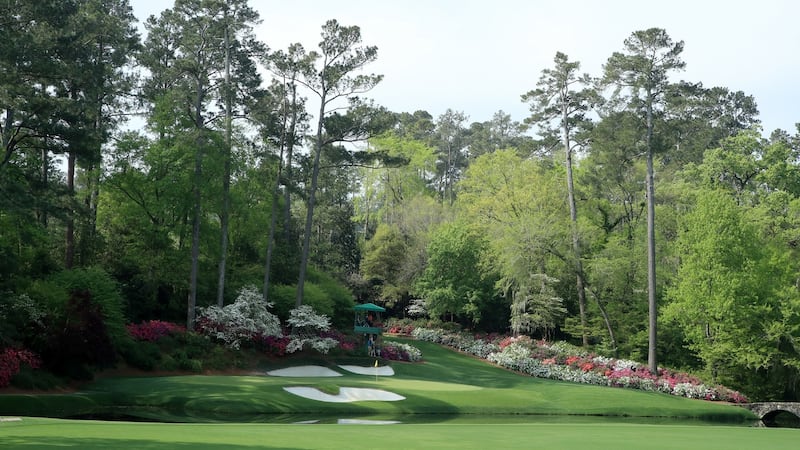The dread starts gnawing well before April. When asked if we are looking forward to the Masters, most caddies, if they are being totally candid will reply, ‘with trepidation’. This tends to be in stark contrast to the general anticipation of the first Major of the season.
The first real glimpse of sporting spring is evoked by the thought of azaleas, magnolias, flowering crab apples and camellias and Jim Nance’s soothing lilt as the cameras guide us around the perfection that is the Augusta National flower show. All is bright and all is calm. The hawks have scared the pesky and unsightly squirrels away, nothing is out of place – not even the wildlife.
Unless you are on the opposite side of the bag of a hypersensitive and expectant competitor who thinks that high alert is the only way to approach this revered event, you may well think that you have landed in Utopia.
At the risk of sounding totally macabre about the Masters experience as a looper, there is no doubt that our lot is a much improved one in comparison to my first visit there in the early 90s. When I first wandered down Magnolia Lane as a young caddie filled with hope, the spring in my innocent step was halted by a sign hanging over the entrance to the caddie-shack. It read: ‘No weapons allowed on the property, ie no guns or knives’.
There was chicken wire separating me from the frying fare in the kitchen and I was standing on an earthen floor. It was far from my conjured image of flowering magnolias and a mild culture shock for a lad from suburban Dublin.
Today our old parking lot is the new driving range and caddie-house where there is no need to advise its patrons about inappropriate armaments. In fact, given the proximity to the range, the caddie quarters have taken on a new focus. With its colonial-styled salons, an abundance of television screens and its aspect to the range quite a few of the Green Jackets set up camp there for the duration of the week to keep an eye on the real action rather than the superficial chatter of the more salubrious clubhouse. Oh, and the menu has improved dramatically, salad and fish have replaced the fried chicken as the only option.

The standard of the golf courses we play week in week out on tour has improved beyond recognition. So has the degree of difficulty both in design and set up. Augusta National and its modern designer, Tom Fazio, have undoubtedly been an inspiration to the newer venues on tour. The players are used to the demanding finishes you have to endure to win a tournament, with seemingly impossible water carries to pins set on terrace-like parapets.
The rewards today are greater but so are the demands and the depth of skill of the competitors. So it’s not like the Masters is the uniquely daunting challenge it may have been in the past, but the added tag of Masters champion will always test the resolve of any serious contender.
What makes these professionals so uptight is a combination of factors which most of us bag-toters discuss at length as we linger in the leafy surrounds of the caddie-house awaiting the arrival of our players. It’s the first Major, so that already heightens tension. The greens are the most undulating of any course we play on and can be as fast or slow as the Green Jackets desire with their total control sub-air systems underneath the putting surfaces. The pin placements seem to creep closer to the abyss with each new year.
The golfers’ sense of worth is put to the test by both the history of the event and the increasing challenge of scoring. Each and every hole has the potential of a double bogey or worse if you miss the green on the wrong side of the pin. Sound strategy and discipline are imperative; the rewards are huge, the risks devastating.
The course can make you ultra conservative to the point of missing greens on the ‘right’ side rather than hitting them on the ‘wrong’ side. The capricious nature of the wind on Augusta National makes all of the above so difficult to get right and so punitive when you get it wrong. Of course the biggest barrier is thinking that you will be perfect and not make the odd error. When that fault is made how does it affect the player, because these are the areas that are so fickle and sensitive at the Masters, this is the reason it is one of the weeks you hope to survive rather than expect to enjoy.
This is probably more so as we have evolved as caddies. We really are a long way from the old notion of bag carriers. Increasingly the toter is influencing the decision made by the player. This applies both strategically and psychologically. Our tasks this week, as they are every other week, are to try to influence the strategic decision making of our players and particularly their mental discipline. Given their increased intensity for the first Major you may well be getting an idea of why we look forward to a seemingly idyllic event with a sense of fear rather than anticipation.
Now if we can somehow get our players to embrace the challenge of both physical and mental discipline and be able to deal with the almost unique adversity that Augusta National presents, we may well be able to enjoy the hike around Amen Corner and not be constantly longing for the easy two-hour drive to next week’s event in Hilton Head and its relative lack of intensity.













